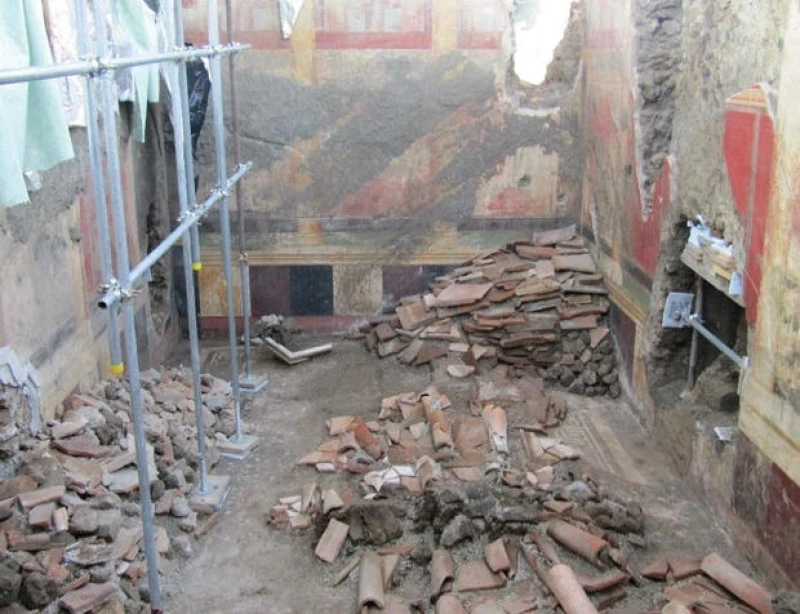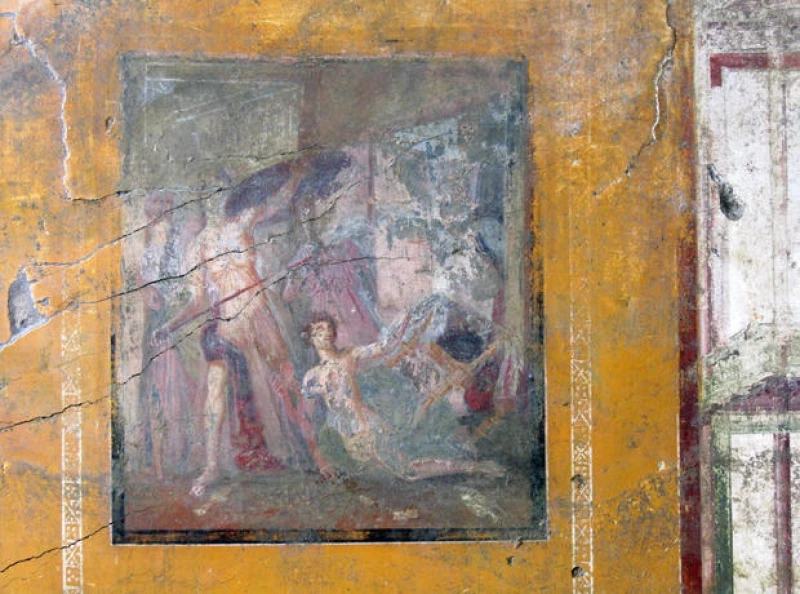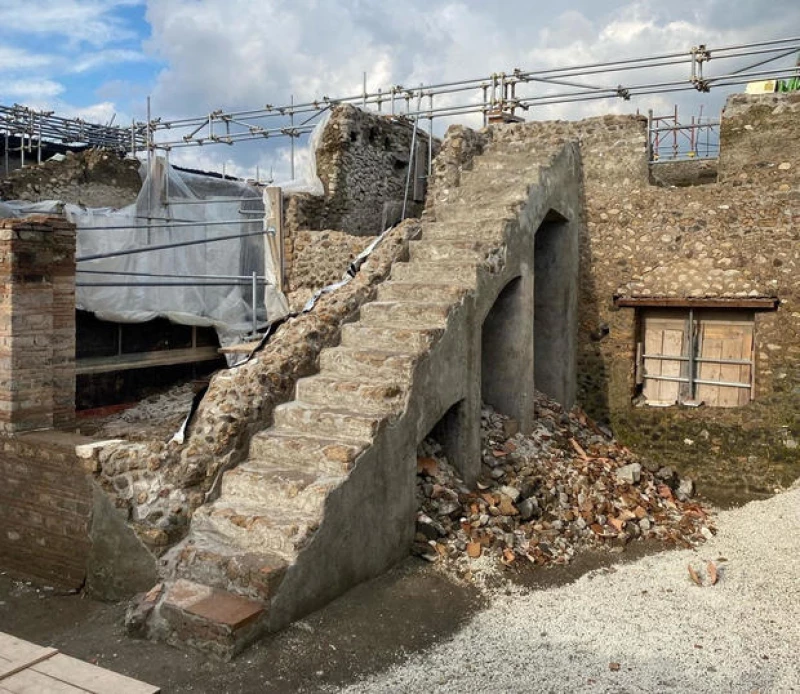A construction site in Pompeii that was being worked on until the eruption of Vesuvius has been discovered, unlocking hidden details about the construction – and politics – in the ancient city. Archeologists excavating Pompeii, a city that was buried under lava in 79 AD, found a house that was under construction when the disaster happened, according to Italy's Ministry of Culture.
Materials like work bricks and tools were piled up in the reception area of the house and lime and plaster used to make walls was found. Construction tools were discovered in several rooms, including tools to prepare mortar and pull up a vertical wall.

The home also included a bakery, which was discovered last year. Archeologists found words etched on stone that urged voters to elect a man named Aulus Rustius Verus, according to Pompeii Archaeological Park, which published the findings in its journal, Pompeii Scavi, in 2023.
This may have been a sign of "vote buying" – the candidate giving the business money in exchange for votes. They also found a painting in the building.
In a nearby house currently under investigation, traces of construction have been found, including "enormous piles of stones" for the walls and ceramics and tiles gathered to make cocciopesto, a type of concrete.
The construction work was ongoing until the eruption of Vesuvius, located just south of Naples. The lava flow began around midday and continued until the next day. Over the last 250 years, more than 1,300 victims have been discovered. In November 2020, archaeologists unearthed two bodies, believed to be an enslaved individual and their possible owner.
According to the experts, the finding of the construction site indicates that laborers utilized quicklime to construct buildings. This construction material creates a paste when mixed with water and generates heat. In this instance, it seems the quicklime was combined with sand.
During the building process, the mixture of lime, sand, and stones was still warm, resulting in faster drying and thus a shorter construction period. The researchers suggest that this technique is still in use today.

"It serves as another illustration of how the small city of Pompeii sheds light on many aspects of the vast Roman Empire, including the use of cement works," stated Gabriel Zuchtriegel, the park's director. Zuchtriegel added that without this type of cement, iconic Italian historical sites such as the Colosseum, Pantheon, or Baths of Caracalla would not have been constructed.
According to Zuchtriegel, construction was in progress throughout Pompeii prior to the volcanic eruption, with the use of this particular cement aiding in the acceleration of the building process.








